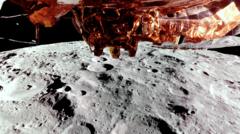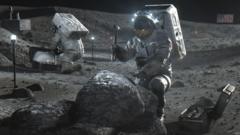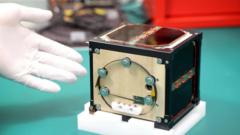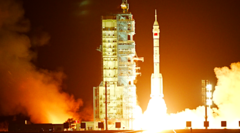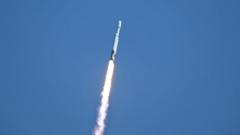Recent findings from a Chinese mission show that volcanic activity occurred billions of years ago on the far side of the moon, highlighting its unique geological history.
Volcanic Activity Discovered on Moon's Far Side: A Glimpse into Its Geological Past
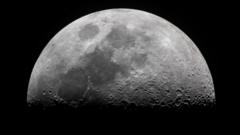
Volcanic Activity Discovered on Moon's Far Side: A Glimpse into Its Geological Past
New research reveals the surprising historical volcanic eruptions on the moon's far side, altering our understanding of its geology.
In a groundbreaking discovery, a team of U.S. and Chinese researchers has uncovered evidence that volcanic eruptions took place on the often-misunderstood far side of the moon billions of years ago. The analysis, stemming from samples collected by China’s Chang’e-6 mission, revealed fragments of basalt rock dating back over 4.2 billion years. The significant research findings were published on Friday in prestigious journals, Nature and Science.
While planetary scientists were already aware of the near side's volcanic activity—visible from Earth—the far side remains largely undiscovered and distinct in its geological characteristics. The Chang’e-6 mission marked a key moment in lunar exploration, retrieving rock and dust samples from the moon's hidden side for the first time, after a challenging two-month journey filled with various operational risks.
The research team, guided by specialists from the Chinese Academy of Sciences, employed radiometric dating techniques to assess the age of the collected volcanic rock. Their investigations unveiled a particularly young volcanic eruption, estimated to have occurred around 2.83 billion years ago—a phenomenon that has not been observed on the near side of the moon.
"This is an incredibly exciting study," remarked Professor Qiuli Li from the Institute of Geology and Geophysics, who provided a comprehensive assessment of the research. "It is the inaugural geochronology study to emerge from the Chang’e-6 samples and is poised to hold substantial significance for both lunar and planetary science."
It is critical to note that while the far side is often labeled the "dark side," it actually receives ample sunlight; this misnomer stems from the Moon being tidally locked to Earth, resulting in the same hemisphere always facing our planet. The first view of this lesser-known side was captured in 1959 by the Soviet Luna 3 spacecraft, providing humanity with its first glimpse of the moon’s other face, albeit in grainy imagery.
Since then, advancements have led to many more detailed images, including a remarkable video from NASA that showcases the moon from its far side, with Earth features in the backdrop. Earlier this year, as a part of the Chang'e-6 mission, a small rover was also deployed to take a "selfie" of the lander set against the rugged terrain of the moon's far side, marking a significant milestone in lunar exploration.





